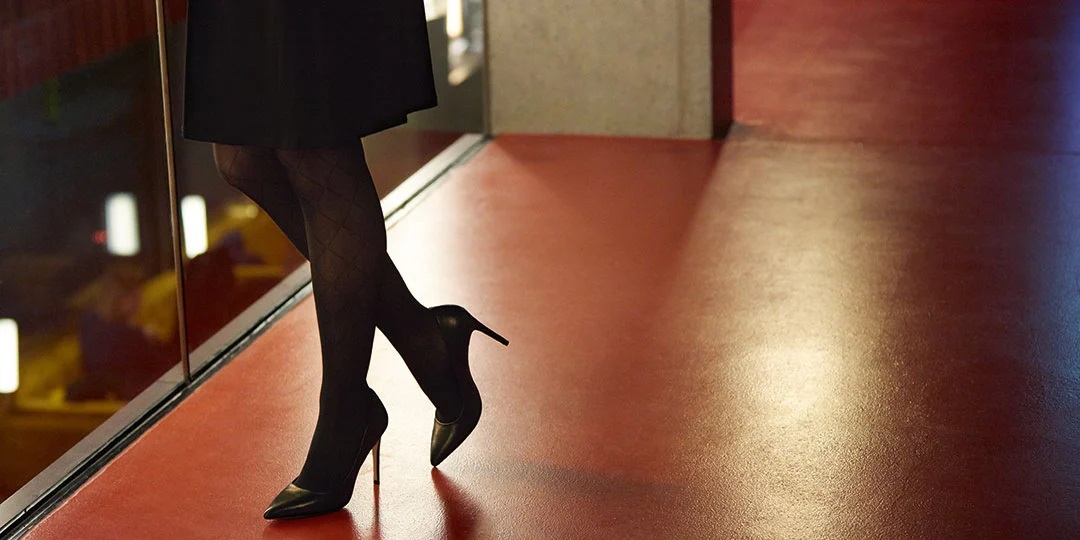Spider Veins
Small veins visible through the skin of your legs are called spider veins. Spider veins are early symptoms of venous disorder. Compression wear can help to relieve symptoms and prevent formation of further spider veins.

Do you see small deep-colored veins on the skin of your legs that appear like tree branches or a spider’s web? On thighs, these so-called spider veins mostly represent a merely aesthetic problem that can be removed through certain endo-vascular procedures in most cases. Spider veins develop if the valves of the superficial veins are not working properly, causing the blood to flow backwards and stagnate in the veins. Like leg symptoms, such as heavy legs and leg pain, the spider veins are early symptoms of venous disorder that can progress into serious venous insufficiency.
What are spider veins?
Spider veins, also called telangiectasia, are small, visible, and incompetent superficial veins under the skin with less than 1 mm in caliber. They are not to be confused with normal visible veins in persons with thin, transparent skin.
Spider veins can be found in different areas of the leg and sometimes on the arms and face. They form a network under the skin that looks like a spider’s web. That is also where their name originates from. Small spider veins are of a rather bright red color. Larger dilated veins (1 mm to less than 3 mm in diameter) are called reticular veins and have a bluish color.
When found on the thighs, spider veins mostly represent a merely aesthetic problem that can be removed in most cases by endo-venous procedures.
When spider veins are present around the ankle, they are called corona phlebectatica. This manifestation is the first cutaneous sign of the development of serious venous insufficiency. Please consult your doctor or a vein specialist. He will be able to confirm the diagnosis and to select the most appropriate treatment for you.
What can I do about spider veins?
In many cases, spider veins are harmless and tend to be an aesthetic matter. But they may also be the first signs of venous disorder or, if located around the ankle as corona phlebectatica, of a more serious venous insufficiency.
Compression works
If you are diagnosed with spider veins, your doctor can prescribe medical compression stockings to apply a controlled pressure on your leg. By compressing the leg strongest at the ankle and decreasing going up the leg, the compression stocking gently squeezes the vein walls together, thereby easing blood flow back towards the heart, reducing venous pressure, and improving overall blood circulation.
Medical compression stockings can help to prevent formation of additional spider veins. They may also reduce associated symptoms, e.g. leg swelling. In addition, progression of an underlying venous disorder and the risk of developing a blood clot can be reduced by wearing compression stockings.
Are there other treatment options for spider veins?
If spider veins are removed for aesthetic reasons, the aesthetic doctor will use an endo-vascular procedure to occlude the visible veins. The procedure of choice is sclerotherapy, an ultrasound-guided procedure that involves cannulating the vein and injecting a foaming agent or sclerosant that leads to occlusion of the vein. In the best case, the collapsed vein is reabsorbed into local tissue and fades over time.
Compression stockings are recommended to be worn after the treatment for the best possible outcome.
Summary
Any feeling of discomfort in the legs or visible cutaneous signs of dilated veins (called spider veins) can be early signs of venous disorder.
Basic medical knowledge on venous disorders
- With the term Chronic Venous Disorder (CVD) we describe a long-standing condition involving impaired venous return.
- If vein valves don’t close properly, a reflux results: the blood leaks downwards and stagnates in the vein, thereby leading to venous hypertension. This condition is known as chronic venous insufficiency (CVI) which may cause edema, skin change, and, in some cases, ulcerations.
- If left untreated, chronic venous insufficiency can result in the formation of serious disorders, including phlebitis and pulmonary embolism. To distinguish the different manifestations of CVD, the CEAP classification system is used.
- Acute venous disorders usually occur without pre-existing conditions, but they can also be triggered by chronic venous disorders. In any case, medical treatment is immediately required. Acute venous disorders include superficial thrombophlebitis, deep vein thrombosis (DVT), pulmonary embolism, post-thrombotic syndrome, and variceal bleeding.

